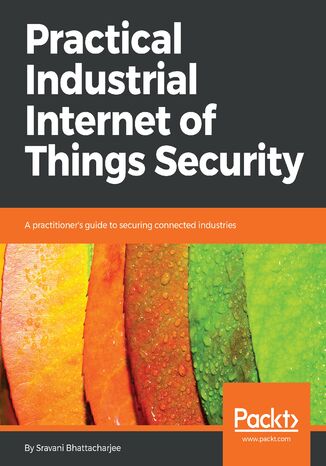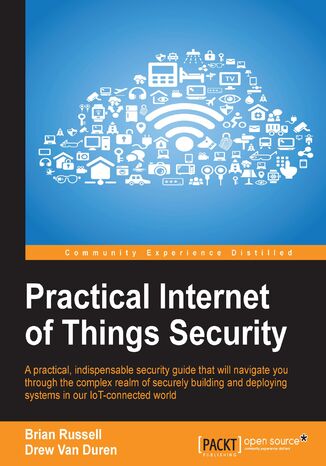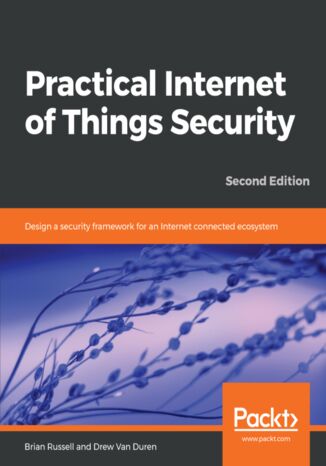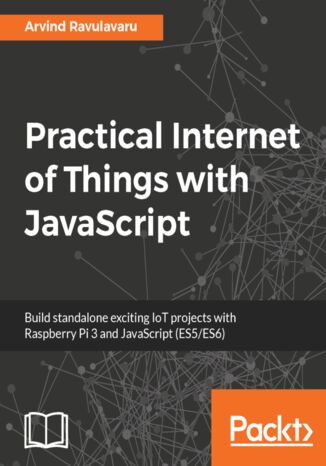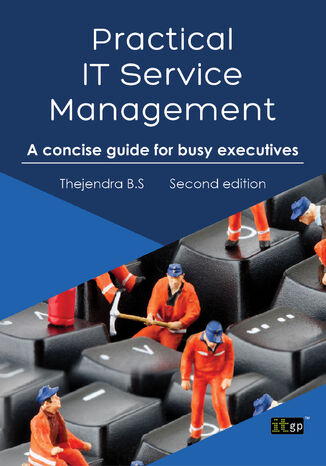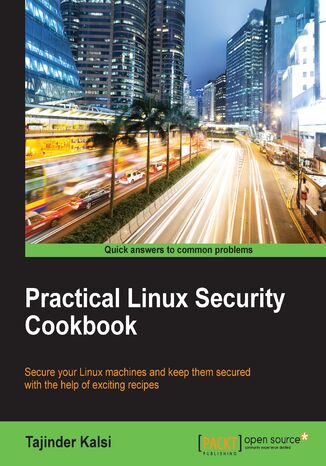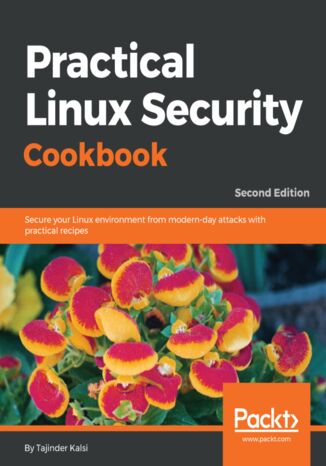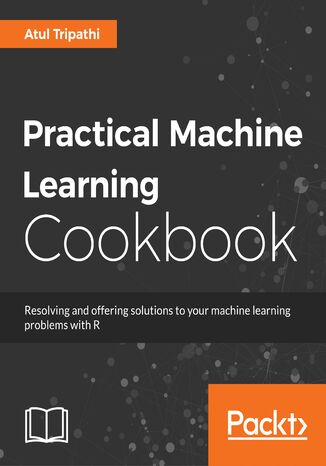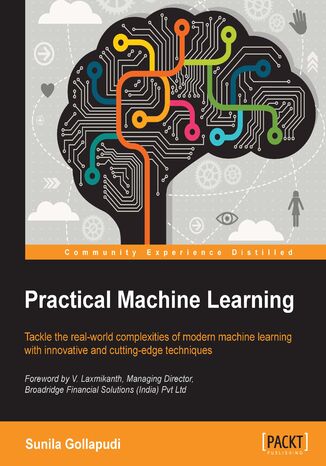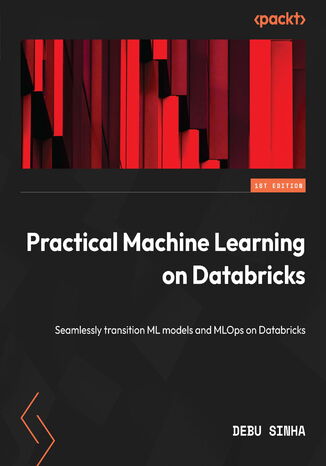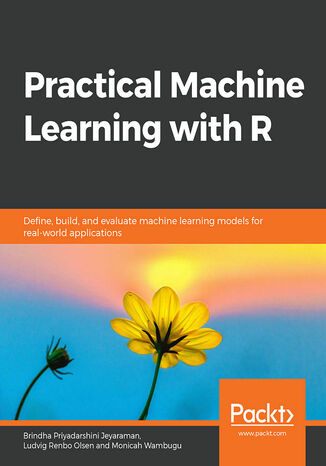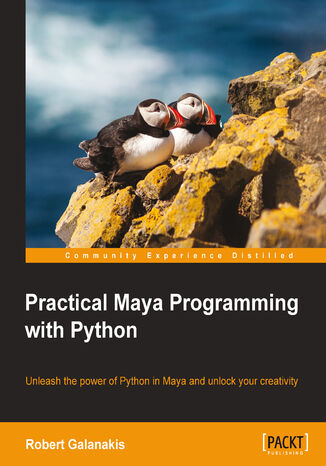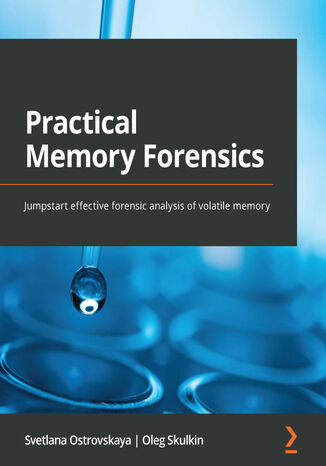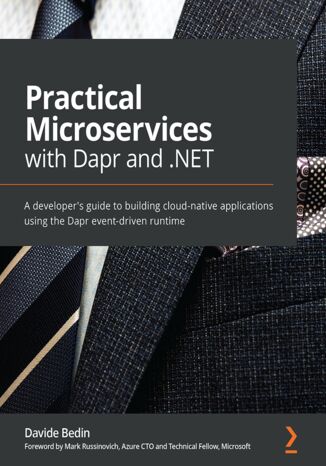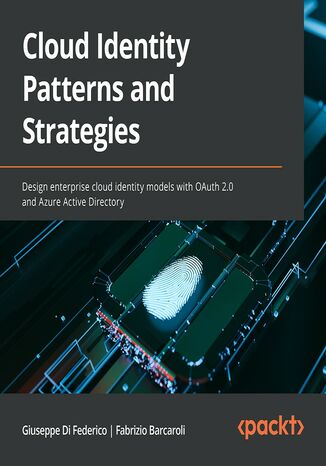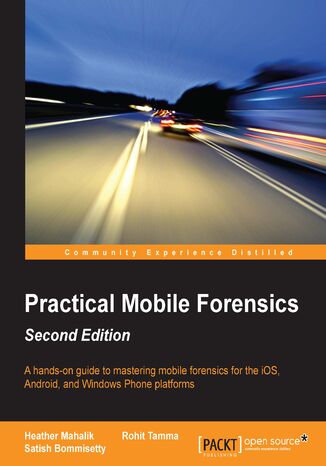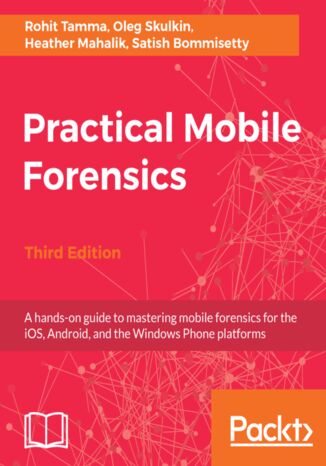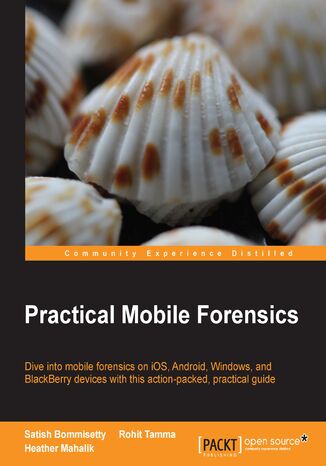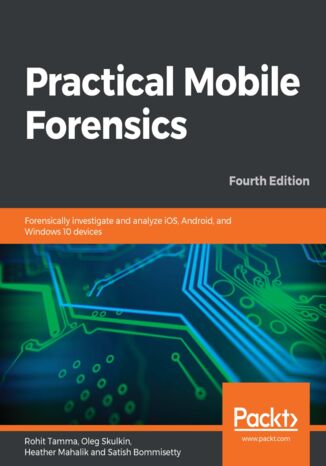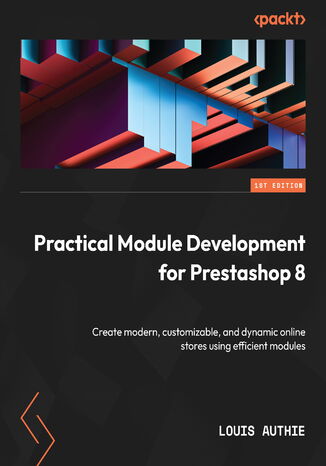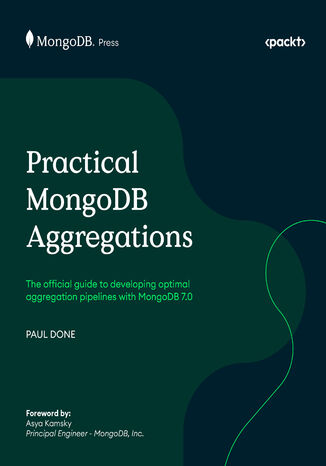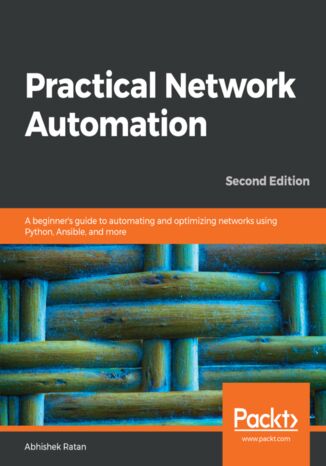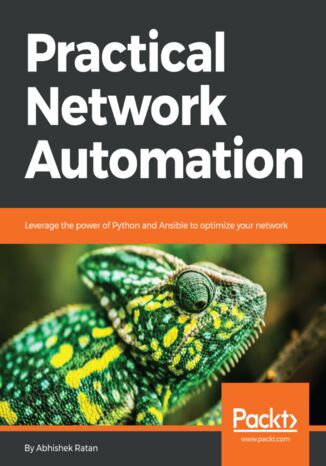Kategorie
Ebooki
-
Biznes i ekonomia
- Bitcoin
- Bizneswoman
- Coaching
- Controlling
- E-biznes
- Ekonomia
- Finanse
- Giełda i inwestycje
- Kompetencje osobiste
- Komputer w biurze
- Komunikacja i negocjacje
- Mała firma
- Marketing
- Motywacja
- Multimedialne szkolenia
- Nieruchomości
- Perswazja i NLP
- Podatki
- Polityka społeczna
- Poradniki
- Prezentacje
- Przywództwo
- Public Relation
- Raporty, analizy
- Sekret
- Social Media
- Sprzedaż
- Start-up
- Twoja kariera
- Zarządzanie
- Zarządzanie projektami
- Zasoby ludzkie (HR)
-
Dla dzieci
-
Dla młodzieży
-
Edukacja
-
Encyklopedie, słowniki
-
E-prasa
- Architektura i wnętrza
- BHP
- Biznes i Ekonomia
- Dom i ogród
- E-Biznes
- Ekonomia i finanse
- Ezoteryka
- Finanse
- Finanse osobiste
- Firma
- Fotografia
- Informatyka
- Kadry i płace
- Kobieca
- Komputery, Excel
- Księgowość
- Kultura i literatura
- Naukowe i akademickie
- Ochrona środowiska
- Opiniotwórcze
- Oświata
- Podatki
- Podróże
- Psychologia
- Religia
- Rolnictwo
- Rynek książki i prasy
- Transport i Spedycja
- Zdrowie i uroda
-
Historia
-
Informatyka
- Aplikacje biurowe
- Bazy danych
- Bioinformatyka
- Biznes IT
- CAD/CAM
- Digital Lifestyle
- DTP
- Elektronika
- Fotografia cyfrowa
- Grafika komputerowa
- Gry
- Hacking
- Hardware
- IT w ekonomii
- Pakiety naukowe
- Podręczniki szkolne
- Podstawy komputera
- Programowanie
- Programowanie mobilne
- Serwery internetowe
- Sieci komputerowe
- Start-up
- Systemy operacyjne
- Sztuczna inteligencja
- Technologia dla dzieci
- Webmasterstwo
-
Inne
-
Języki obce
-
Kultura i sztuka
-
Lektury szkolne
-
Literatura
- Antologie
- Ballada
- Biografie i autobiografie
- Dla dorosłych
- Dramat
- Dzienniki, pamiętniki, listy
- Epos, epopeja
- Esej
- Fantastyka i science-fiction
- Felietony
- Fikcja
- Humor, satyra
- Inne
- Klasyczna
- Kryminał
- Literatura faktu
- Literatura piękna
- Mity i legendy
- Nobliści
- Nowele
- Obyczajowa
- Okultyzm i magia
- Opowiadania
- Pamiętniki
- Podróże
- Poemat
- Poezja
- Polityka
- Popularnonaukowa
- Powieść
- Powieść historyczna
- Proza
- Przygodowa
- Publicystyka
- Reportaż
- Romans i literatura obyczajowa
- Sensacja
- Thriller, Horror
- Wywiady i wspomnienia
-
Nauki przyrodnicze
-
Nauki społeczne
-
Podręczniki szkolne
-
Popularnonaukowe i akademickie
- Archeologia
- Bibliotekoznawstwo
- Filmoznawstwo
- Filologia
- Filologia polska
- Filozofia
- Finanse i bankowość
- Geografia
- Gospodarka
- Handel. Gospodarka światowa
- Historia i archeologia
- Historia sztuki i architektury
- Kulturoznawstwo
- Lingwistyka
- Literaturoznawstwo
- Logistyka
- Matematyka
- Medycyna
- Nauki humanistyczne
- Pedagogika
- Pomoce naukowe
- Popularnonaukowa
- Pozostałe
- Psychologia
- Socjologia
- Teatrologia
- Teologia
- Teorie i nauki ekonomiczne
- Transport i spedycja
- Wychowanie fizyczne
- Zarządzanie i marketing
-
Poradniki
-
Poradniki do gier
-
Poradniki zawodowe i specjalistyczne
-
Prawo
- BHP
- Historia
- Kodeks drogowy. Prawo jazdy
- Nauki prawne
- Ochrona zdrowia
- Ogólne, kompendium wiedzy
- Podręczniki akademickie
- Pozostałe
- Prawo budowlane i lokalowe
- Prawo cywilne
- Prawo finansowe
- Prawo gospodarcze
- Prawo gospodarcze i handlowe
- Prawo karne
- Prawo karne. Przestępstwa karne. Kryminologia
- Prawo międzynarodowe
- Prawo międzynarodowe i zagraniczne
- Prawo ochrony zdrowia
- Prawo oświatowe
- Prawo podatkowe
- Prawo pracy i ubezpieczeń społecznych
- Prawo publiczne, konstytucyjne i administracyjne
- Prawo rodzinne i opiekuńcze
- Prawo rolne
- Prawo socjalne, prawo pracy
- Prawo Unii Europejskiej
- Przemysł
- Rolne i ochrona środowiska
- Słowniki i encyklopedie
- Zamówienia publiczne
- Zarządzanie
-
Przewodniki i podróże
- Afryka
- Albumy
- Ameryka Południowa
- Ameryka Środkowa i Północna
- Australia, Nowa Zelandia, Oceania
- Austria
- Azja
- Bałkany
- Bliski Wschód
- Bułgaria
- Chiny
- Chorwacja
- Czechy
- Dania
- Egipt
- Estonia
- Europa
- Francja
- Góry
- Grecja
- Hiszpania
- Holandia
- Islandia
- Litwa
- Łotwa
- Mapy, Plany miast, Atlasy
- Miniprzewodniki
- Niemcy
- Norwegia
- Podróże aktywne
- Polska
- Portugalia
- Pozostałe
- Przewodniki po hotelach i restauracjach
- Rosja
- Rumunia
- Słowacja
- Słowenia
- Szwajcaria
- Szwecja
- Świat
- Turcja
- Ukraina
- Węgry
- Wielka Brytania
- Włochy
-
Psychologia
- Filozofie życiowe
- Kompetencje psychospołeczne
- Komunikacja międzyludzka
- Mindfulness
- Ogólne
- Perswazja i NLP
- Psychologia akademicka
- Psychologia duszy i umysłu
- Psychologia pracy
- Relacje i związki
- Rodzicielstwo i psychologia dziecka
- Rozwiązywanie problemów
- Rozwój intelektualny
- Sekret
- Seksualność
- Uwodzenie
- Wygląd i wizerunek
- Życiowe filozofie
-
Religia
-
Sport, fitness, diety
-
Technika i mechanika
Audiobooki
-
Biznes i ekonomia
- Bitcoin
- Bizneswoman
- Coaching
- Controlling
- E-biznes
- Ekonomia
- Finanse
- Giełda i inwestycje
- Kompetencje osobiste
- Komunikacja i negocjacje
- Mała firma
- Marketing
- Motywacja
- Nieruchomości
- Perswazja i NLP
- Podatki
- Polityka społeczna
- Poradniki
- Prezentacje
- Przywództwo
- Public Relation
- Sekret
- Social Media
- Sprzedaż
- Start-up
- Twoja kariera
- Zarządzanie
- Zarządzanie projektami
- Zasoby ludzkie (HR)
-
Dla dzieci
-
Dla młodzieży
-
Edukacja
-
Encyklopedie, słowniki
-
E-prasa
-
Historia
-
Informatyka
-
Inne
-
Języki obce
-
Kultura i sztuka
-
Lektury szkolne
-
Literatura
- Antologie
- Ballada
- Biografie i autobiografie
- Dla dorosłych
- Dramat
- Dzienniki, pamiętniki, listy
- Epos, epopeja
- Esej
- Fantastyka i science-fiction
- Felietony
- Fikcja
- Humor, satyra
- Inne
- Klasyczna
- Kryminał
- Literatura faktu
- Literatura piękna
- Mity i legendy
- Nobliści
- Nowele
- Obyczajowa
- Okultyzm i magia
- Opowiadania
- Pamiętniki
- Podróże
- Poezja
- Polityka
- Popularnonaukowa
- Powieść
- Powieść historyczna
- Proza
- Przygodowa
- Publicystyka
- Reportaż
- Romans i literatura obyczajowa
- Sensacja
- Thriller, Horror
- Wywiady i wspomnienia
-
Nauki przyrodnicze
-
Nauki społeczne
-
Popularnonaukowe i akademickie
-
Poradniki
-
Poradniki zawodowe i specjalistyczne
-
Prawo
-
Przewodniki i podróże
-
Psychologia
- Filozofie życiowe
- Komunikacja międzyludzka
- Mindfulness
- Ogólne
- Perswazja i NLP
- Psychologia akademicka
- Psychologia duszy i umysłu
- Psychologia pracy
- Relacje i związki
- Rodzicielstwo i psychologia dziecka
- Rozwiązywanie problemów
- Rozwój intelektualny
- Sekret
- Seksualność
- Uwodzenie
- Wygląd i wizerunek
- Życiowe filozofie
-
Religia
-
Sport, fitness, diety
-
Technika i mechanika
Kursy video
-
Bazy danych
-
Big Data
-
Biznes, ekonomia i marketing
-
Cyberbezpieczeństwo
-
Data Science
-
DevOps
-
Dla dzieci
-
Elektronika
-
Grafika/Wideo/CAX
-
Gry
-
Microsoft Office
-
Narzędzia programistyczne
-
Programowanie
-
Rozwój osobisty
-
Sieci komputerowe
-
Systemy operacyjne
-
Testowanie oprogramowania
-
Urządzenia mobilne
-
UX/UI
-
Web development
-
Zarządzanie
Podcasty
Securing connected industries and autonomous systems is of primary concern to the Industrial Internet of Things (IIoT) community. Unlike cybersecurity, cyber-physical security directly ties to system reliability as well as human and environmental safety.This hands-on guide begins by establishing the foundational concepts of IIoT security with the help of real-world case studies, threat models, and reference architectures. You’ll work with practical tools to design risk-based security controls for industrial use cases and gain practical knowledge of multi-layered defense techniques, including identity and access management (IAM), endpoint security, and communication infrastructure. You’ll also understand how to secure IIoT lifecycle processes, standardization, and governance. In the concluding chapters, you’ll explore the design and implementation of resilient connected systems with emerging technologies such as blockchain, artificial intelligence, and machine learning.By the end of this book, you’ll be equipped with the all the knowledge required to design industry-standard IoT systems confidently.
With the advent of Internet of Things (IoT), businesses will be faced with defending against new types of threats. The business ecosystem now includes cloud computing infrastructure, mobile and fixed endpoints that open up new attack surfaces, a desire to share information with many stakeholders and a need to take action quickly based on large quantities of collected data. . It therefore becomes critical to ensure that cyber security threats are contained to a minimum when implementing new IoT services and solutions. . The interconnectivity of people, devices, and companies raises stakes to a new level as computing and action become even more mobile, everything becomes connected to the cloud, and infrastructure is strained to securely manage the billions of devices that will connect us all to the IoT. This book shows you how to implement cyber-security solutions, IoT design best practices and risk mitigation methodologies to address device and infrastructure threats to IoT solutions.This book will take readers on a journey that begins with understanding the IoT and how it can be applied in various industries, goes on to describe the security challenges associated with the IoT, and then provides a set of guidelines to architect and deploy a secure IoT in your Enterprise. The book will showcase how the IoT is implemented in early-adopting industries and describe how lessons can be learned and shared across diverse industries to support a secure IoT.
With the advent of the Internet of Things (IoT), businesses have to defend against new types of threat. The business ecosystem now includes the cloud computing infrastructure, mobile and fixed endpoints that open up new attack surfaces. It therefore becomes critical to ensure that cybersecurity threats are contained to a minimum when implementing new IoT services and solutions.This book shows you how to implement cybersecurity solutions, IoT design best practices, and risk mitigation methodologies to address device and infrastructure threats to IoT solutions.In this second edition, you will go through some typical and unique vulnerabilities seen within various layers of the IoT technology stack and also learn new ways in which IT and physical threats interact. You will then explore the different engineering approaches a developer/manufacturer might take to securely design and deploy IoT devices. Furthermore, you will securely develop your own custom additions for an enterprise IoT implementation. You will also be provided with actionable guidance through setting up a cryptographic infrastructure for your IoT implementations. You will then be guided on the selection and configuration of Identity and Access Management solutions for an IoT implementation. In conclusion, you will explore cloud security architectures and security best practices for operating and managing cross-organizational, multi-domain IoT deployments.
In this world of technology upgrades, IoT is currently leading with its promise to make the world a more smarter and efficient place.This book will show you how to build simple IoT solutions that will help you to understand how this technology works. We would not only explore the IoT solution stack, but we will also see how to do it with the world’s most misunderstood programming language - JavaScript. Using Raspberry Pi 3 and JavaScript (ES5/ES6) as the base to build all the projects, you will begin with learning about the fundamentals of IoT and then build a standard framework for developing all the applications covered in this book. You will then move on to build a weather station with temperature, humidity and moisture sensors and further integrate Alexa with it. Further, you will build a smart wearable for understanding the concept of fall detection. You will then extend it with the 'If This Then That' (IFTTT) rules engine to send an email on fall detection. Finally, you will be working with the Raspberry Pi 3 camera module and surveillance with a bit of facial detection using Amazon Rekognition platform.At the end of the book, you will not only be able to build standalone exciting IoT applications but also learn how you can extend your projects to another level.
Practical IT Service Management. A concise guide for busy executives
IT Governance Publishing, Thejendra B.S
This book provides a detailed guide to IT service management (ITSM), centered around the ITIL framework to enhance IT service delivery. It starts by introducing foundational concepts such as IT services, common challenges in IT departments, and the evolution of ITIL, particularly the 2011 edition. The early chapters cover core topics like service strategy, design, and the ITIL lifecycle, offering a strong foundation for understanding how ITIL aligns with business objectives.As the book progresses, it delves into key ITIL processes such as service desk management, incident management, problem management, change and release management, and service asset management. Each chapter explains the roles, responsibilities, and best practices for each process, providing actionable advice and real-world examples for effective application. These sections focus on improving service efficiency and handling IT challenges.The final chapters address advanced topics like service level management, financial management, supplier management, and service continuity. These insights help readers manage resources, build vendor relationships, and ensure business continuity. By the end, readers will be equipped to apply ITIL to optimize IT operations, align them with business needs, and drive continuous improvement.
Practical Linux Security Cookbook. Click here to enter text
With the growing popularity of Linux, more and more administrators have started moving to the system to create networks or servers for any task. This also makes Linux the first choice for any attacker now. Due to the lack of information about security-related attacks, administrators now face issues in dealing with these attackers as quickly as possible. Learning about the different types of Linux security will help create a more secure Linux system.Whether you are new to Linux administration or experienced, this book will provide you with the skills to make systems more secure.With lots of step-by-step recipes, the book starts by introducing you to various threats to Linux systems. You then get to walk through customizing the Linux kernel and securing local files. Next you will move on to manage user authentication locally and remotely and also mitigate network attacks. Finally, you will learn to patch bash vulnerability and monitor system logs for security.With several screenshots in each example, the book will supply a great learning experience and help you create more secure Linux systems.
Over the last few years, system security has gained a lot of momentum and software professionals are focusing heavily on it. Linux is often treated as a highly secure operating system. However, the reality is that Linux has its share of security ?aws, and these security ?aws allow attackers to get into your system and modify or even destroy your important data. But there’s no need to panic, since there are various mechanisms by which these ?aws can be removed, and this book will help you learn about different types of Linux security to create a more secure Linux system. With a step-by-step recipe approach, the book starts by introducing you to various threats to Linux systems. Then, this book will walk you through customizing the Linux kernel and securing local files. Next, you will move on to managing user authentication both locally and remotely and mitigating network attacks. Later, you will learn about application security and kernel vulnerabilities. You will also learn about patching Bash vulnerability, packet filtering, handling incidents, and monitoring system logs. Finally, you will learn about auditing using system services and performing vulnerability scanning on Linux.By the end of this book, you will be able to secure your Linux systems and create a robust environment.
Practical Machine Learning Cookbook. Supervised and unsupervised machine learning simplified
Machine learning has become the new black. The challenge in today’s world is the explosion of data from existing legacy data and incoming new structured and unstructured data. The complexity of discovering, understanding, performing analysis, and predicting outcomes on the data using machine learning algorithms is a challenge. This cookbook will help solve everyday challenges you face as a data scientist. The application of various data science techniques and on multiple data sets based on real-world challenges you face will help you appreciate a variety of techniques used in various situations.The first half of the book provides recipes on fairly complex machine-learning systems, where you’ll learn to explore new areas of applications of machine learning and improve its efficiency. That includes recipes on classifications, neural networks, unsupervised and supervised learning, deep learning, reinforcement learning, and more.The second half of the book focuses on three different machine learning case studies, all based on real-world data, and offers solutions and solves specific machine-learning issues in each one.
This book explores an extensive range of machine learning techniques uncovering hidden tricks and tips for several types of data using practical and real-world examples. While machine learning can be highly theoretical, this book offers a refreshing hands-on approach without losing sight of the underlying principles. Inside, a full exploration of the various algorithms gives you high-quality guidance so you can begin to see just how effective machine learning is at tackling contemporary challenges of big dataThis is the only book you need to implement a whole suite of open source tools, frameworks, and languages in machine learning. We will cover the leading data science languages, Python and R, and the underrated but powerful Julia, as well as a range of other big data platforms including Spark, Hadoop, and Mahout. Practical Machine Learning is an essential resource for the modern data scientists who want to get to grips with its real-world application.With this book, you will not only learn the fundamentals of machine learning but dive deep into the complexities of real world data before moving on to using Hadoop and its wider ecosystem of tools to process and manage your structured and unstructured data. You will explore different machine learning techniques for both supervised and unsupervised learning; from decision trees to Naïve Bayes classifiers and linear and clustering methods, you will learn strategies for a truly advanced approach to the statistical analysis of data. The book also explores the cutting-edge advancements in machine learning, with worked examples and guidance on deep learning and reinforcement learning, providing you with practical demonstrations and samples that help take the theory–and mystery–out of even the most advanced machine learning methodologies.
Practical Machine Learning on Databricks. Seamlessly transition ML models and MLOps on Databricks
Unleash the potential of databricks for end-to-end machine learning with this comprehensive guide, tailored for experienced data scientists and developers transitioning from DIY or other cloud platforms. Building on a strong foundation in Python, Practical Machine Learning on Databricks serves as your roadmap from development to production, covering all intermediary steps using the databricks platform. You’ll start with an overview of machine learning applications, databricks platform features, and MLflow. Next, you’ll dive into data preparation, model selection, and training essentials and discover the power of databricks feature store for precomputing feature tables. You’ll also learn to kickstart your projects using databricks AutoML and automate retraining and deployment through databricks workflows. By the end of this book, you’ll have mastered MLflow for experiment tracking, collaboration, and advanced use cases like model interpretability and governance. The book is enriched with hands-on example code at every step. While primarily focused on generally available features, the book equips you to easily adapt to future innovations in machine learning, databricks, and MLflow.
Brindha Priyadarshini Jeyaraman, Ludvig Renbo Olsen, Monicah Wambugu
With huge amounts of data being generated every moment, businesses need applications that apply complex mathematical calculations to data repeatedly and at speed. With machine learning techniques and R, you can easily develop these kinds of applications in an efficient way.Practical Machine Learning with R begins by helping you grasp the basics of machine learning methods, while also highlighting how and why they work. You will understand how to get these algorithms to work in practice, rather than focusing on mathematical derivations. As you progress from one chapter to another, you will gain hands-on experience of building a machine learning solution in R. Next, using R packages such as rpart, random forest, and multiple imputation by chained equations (MICE), you will learn to implement algorithms including neural net classifier, decision trees, and linear and non-linear regression. As you progress through the book, you’ll delve into various machine learning techniques for both supervised and unsupervised learning approaches. In addition to this, you’ll gain insights into partitioning the datasets and mechanisms to evaluate the results from each model and be able to compare them. By the end of this book, you will have gained expertise in solving your business problems, starting by forming a good problem statement, selecting the most appropriate model to solve your problem, and then ensuring that you do not overtrain it.
Practical Memory Forensics. Jumpstart effective forensic analysis of volatile memory
Svetlana Ostrovskaya, Oleg Skulkin
Memory Forensics is a powerful analysis technique that can be used in different areas, from incident response to malware analysis. With memory forensics, you can not only gain key insights into the user's context but also look for unique traces of malware, in some cases, to piece together the puzzle of a sophisticated targeted attack.Starting with an introduction to memory forensics, this book will gradually take you through more modern concepts of hunting and investigating advanced malware using free tools and memory analysis frameworks. This book takes a practical approach and uses memory images from real incidents to help you gain a better understanding of the subject and develop the skills required to investigate and respond to malware-related incidents and complex targeted attacks. You'll cover Windows, Linux, and macOS internals and explore techniques and tools to detect, investigate, and hunt threats using memory forensics. Equipped with this knowledge, you'll be able to create and analyze memory dumps on your own, examine user activity, detect traces of fileless and memory-based malware, and reconstruct the actions taken by threat actors.By the end of this book, you'll be well-versed in memory forensics and have gained hands-on experience of using various tools associated with it.
Davide Bedin, Mark Russinovich
Over the last decade, there has been a huge shift from heavily coded monolithic applications to finer, self-contained microservices. Dapr is a new, open source project by Microsoft that provides proven techniques and best practices for developing modern applications. It offers platform-agnostic features for running your applications on public cloud, on-premises, and even on edge devices.This book will help you get to grips with microservice architectures and how to manage application complexities with Dapr in no time. You'll understand how Dapr offers ease of implementation while allowing you to work with multiple languages and platforms. You'll also understand how Dapr's runtime, services, building blocks, and software development kits (SDKs) help you to simplify the creation of resilient and portable microservices. Dapr provides an event-driven runtime that supports the essential features you need to build microservices, including service invocation, state management, and publish/subscribe messaging. You'll explore all of those in addition to various other advanced features with this practical guide to learning Dapr.By the end of this book, you'll be able to write microservices easily using your choice of language or framework by implementing industry best practices to solve problems related to distributed systems.
Davide Bedin, Mark Russinovich
This second edition will help you get to grips with microservice architectures and how to manage application complexities with Dapr in no time. You'll understand how Dapr simplifies development while allowing you to work with multiple languages and platforms. Following a C# sample, you'll understand how Dapr's runtime, building blocks, and software development kits (SDKs) help you to simplify the creation of resilient and portable microservices.Dapr provides an event-driven runtime that supports the essential features you need for building microservices, including service invocation, state management, and publish/subscribe messaging. You'll explore all of those in addition to various other advanced features with this practical guide to learning Dapr. With a focus on deploying the Dapr sample application to an Azure Kubernetes Service cluster and to the Azure Container Apps serverless platform, you’ll see how to expose the Dapr application with NGINX, YARP, and Azure API Management.By the end of this book, you'll be able to write microservices easily by implementing industry best practices to solve problems related to distributed systems.
Heather Mahalik, Rohit Tamma, Satish Bommisetty
Mobile phone forensics is the science of retrieving data from a mobile phone under forensically sound conditions. This book is an update to Practical Mobile Forensics and it delves into the concepts of mobile forensics and its importance in today's world. We will deep dive into mobile forensics techniques in iOS 8 - 9.2, Android 4.4 - 6, and Windows Phone devices. We will demonstrate the latest open source and commercial mobile forensics tools, enabling you to analyze and retrieve data effectively. You will learn how to introspect and retrieve data from cloud, and document and prepare reports for your investigations.By the end of this book, you will have mastered the current operating systems and techniques so you can recover data from mobile devices by leveraging open source solutions.
Rohit Tamma, Oleg Skulkin, Heather Mahalik, Satish Bommisetty
Covering up-to-date mobile platforms, this book will focuses on teaching you the most recent techniques for investigating mobile devices. We delve mobile forensics techniques in iOS 9-11, Android 7-8 devices, and Windows 10. We will demonstrate the latest open source and commercial mobile forensics tools, enabling you to analyze and retrieve data effectively. You will learn how to introspect and retrieve data from the cloud, and document and prepare reports of your investigations. By the end of this book, you will have mastered the current operating systems and the relevant techniques to recover data from mobile devices by leveraging open source solutions.
Rohit Tamma, Oleg Skulkin, Heather Mahalik, Satish Bommisetty
Mobile phone forensics is the science of retrieving data from a mobile phone under forensically sound conditions. This updated fourth edition of Practical Mobile Forensics delves into the concepts of mobile forensics and its importance in today's world.The book focuses on teaching you the latest forensic techniques to investigate mobile devices across various mobile platforms. You will learn forensic techniques for multiple OS versions, including iOS 11 to iOS 13, Android 8 to Android 10, and Windows 10. The book then takes you through the latest open source and commercial mobile forensic tools, enabling you to analyze and retrieve data effectively. From inspecting the device and retrieving data from the cloud, through to successfully documenting reports of your investigations, you'll explore new techniques while building on your practical knowledge. Toward the end, you will understand the reverse engineering of applications and ways to identify malware. Finally, the book guides you through parsing popular third-party applications, including Facebook and WhatsApp.By the end of this book, you will be proficient in various mobile forensic techniques to analyze and extract data from mobile devices with the help of open source solutions.
Most organizations face challenges in defining and achieving evolved enterprise architecture practices, which can be a very lengthy process even if implemented correctly. Developers, for example, can build better solutions only if they receive the necessary design information from architects, and decision-makers can make appropriate changes within the organization only if they know the implications of doing so.The book starts by addressing the problems faced by enterprise architecture practitioners and provides solutions based on an agile approach to enterprise architecture, using ArchiMate® 3.1 as an industry standard and Sparx EA as the modeling tool. You'll learn with the help of a fictional organization that has three business units, each expecting something different from you as the enterprise architect. You'll build the practice, satisfy the different requirements of each business unit, and share the knowledge with others so they can follow your steps. Toward the end, you'll learn how to put the diagrams and the content that you have developed into documents, presentations, and web pages that can be published and shared with any stakeholder.By the end of this book, you'll be able to build a functional enterprise architecture practice that supports every part of your organization. You'll also have developed the necessary skills to populate your enterprise architecture repository with references and artifacts.
After version 1.7, PrestaShop underwent a host of changes, including migration to a Symfony-based system from an outdated legacy code. This migration brought about significant changes for developers, from routine maintenance to module development. Practical Module Development for PrestaShop 8 is curated to help you explore the system architecture, including migrated and non-migrated controllers, with a concise data structure overview. You’ll understand how hooks enable module customization and optimize the CMS.Through the creation of seven modules, you’ll learn about the structure of modules, hook registration, the creation of front-office controllers, and Symfony back-office controllers. By using Doctrine entities, services, CQRS, grids, and forms, you’ll be guided through the creation of standard, payment and carrier modules. Additionally, you'll customize and override themes to achieve your desired e-commerce store look.By the end of this book, you’ll be well equipped to provide modern solutions with PrestaShop that meet client requirements.
Officially endorsed by MongoDB, Inc., Practical MongoDB Aggregations helps you unlock the full potential of the MongoDB aggregation framework, including the latest features of MongoDB 7.0. This book provides practical, easy-to-digest principles and approaches for increasing your effectiveness in developing aggregation pipelines, supported by examples for building pipelines to solve complex data manipulation and analytical tasks.This book is customized for developers, architects, data analysts, data engineers, and data scientists with some familiarity with the aggregation framework. It begins by explaining the framework's architecture and then shows you how to build pipelines optimized for productivity and scale.Given the critical role arrays play in MongoDB's document model, the book delves into best practices for optimally manipulating arrays. The latter part of the book equips you with examples to solve common data processing challenges so you can apply the lessons you've learned to practical situations. By the end of this MongoDB book, you’ll have learned how to utilize the MongoDB aggregation framework to streamline your data analysis and manipulation processes effectively.
Network automation is the use of IT controls to supervise and carry out everyday network management functions. It plays a key role in network virtualization technologies and network functions.The book starts by providing an introduction to network automation, and its applications, which include integrating DevOps tools to automate the network efficiently. It then guides you through different network automation tasks and covers various data digging and performing tasks such as ensuring golden state configurations using templates, interface parsing. This book also focuses on Intelligent Operations using Artificial Intelligence and troubleshooting using chatbots and voice commands. The book then moves on to the use of Python and the management of SSH keys for machine-to-machine (M2M) communication, all followed by practical use cases. The book also covers the importance of Ansible for network automation, including best practices in automation; ways to test automated networks using tools such as Puppet, SaltStack, and Chef; and other important techniques.Through practical use-cases and examples, this book will acquaint you with the various aspects of network automation. It will give you the solid foundation you need to automate your own network without any hassle.
Practical Network Automation. Leverage the power of Python and Ansible to optimize your network
Network automation is the use of IT controls to supervise and carry out every-day network management functions. It plays a key role in network virtualization technologies and network functions.The book starts by providing an introduction to network automation, SDN, and its applications, which include integrating DevOps tools to automate the network efficiently. It then guides you through different network automation tasks and covers various data digging and reporting methodologies such as IPv6 migration, DC relocations, and interface parsing, all the while retaining security and improving data center robustness. The book then moves on to the use of Python and the management of SSH keys for machine-to-machine (M2M) communication, all followed by practical use cases. The book also covers the importance of Ansible for network automation including best practices in automation, ways to test automated networks using different tools, and other important techniques.By the end of the book, you will be well acquainted with the various aspects of network automation.

